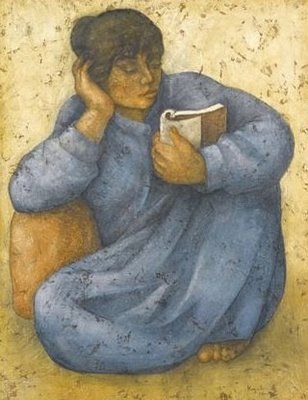 6 Books We Are Reading This Holiday Season
6 Books We Are Reading This Holiday Season


To celebrate the upcoming holiday season (we are definitely counting the days already, what about you?), we wanted to present to you the books we are saving for the winter break. If you have any great recommendations, please do share them in the comments. Without further ado, please see the books we, Mathqaf’s co-founders, recommend for the holiday season 2020.
1. Tarazi, G., Montazami, M. (2017). Gebran Tarazi: Twelve seasons. Paris: Zamân books.
“After this particularly exhausting year, I am looking forward to wind down quietly next to my significant other and a pile of books, first one being an exploration into the artistic practice of Lebanese artist Gebran Tarazi (1944-2010). Tarazi became well known for his geometric art through which he negotiated a number of complicated subjects: identity, politics, territorial questions. Montazami edited an aesthetically pleasant volume discussing Tarazi’s oeuvre, which seems to be full of contradictions; analytical yet surreal, rigorous but dreamlike. Bonus points for extracts from the artist’s writings, journal, letters and critical texts.”
2. Bank, C. (2020). The contemporary art scene in Syria: Social critique and an artistic movement. New York: Routledge, Taylor & Francis Group.
“I cannot wait to open Charlotte Bank’s book on the Syrian contemporary art scene. Analytical and critical monographic works scrutinising the artistic production and systems of West Asia and North Africa are quite scarce, making Bank’s work incredibly valuable. I also find it rather interesting to read books dealing with relatively recent history. Bank focuses particularly on Damascus and the first decade of our current century, which in Syria was characterised by a high degree of experimentation as young artists began to work with video, installation and performance art.”
3. Boldrick, S. (2020). Iconoclasm and the museum. Abingdon, Oxon: Routledge, Taylor & Francis Group.
“I hope to celebrate the new year with Stacy Boldrick’s monograph dealing with iconoclasm and the museum, presenting a number of case studies discussing the desires to deface, dismantle, obscure and destroy works of art and historic artefacts, but also the motivations to protect and display broken objects. I am particularly looking forward to reading more about the institutional aspects to iconoclasm and get some new museological insights into this multifaceted phenomenon that was topical in 2020 with the destruction of racist statues and landmarks around the world.”
4. Groys, B. (2012). Art power. Milano: Postmedia.
“During this holiday season, I am revisiting a book that has informed my understanding of contemporary art and its shifts of power. In this volume of essays, Groys addresses a variety of subjects that tackle the notion of art, its ideological functions, the shift from art critic to curator, the substitution of artworks by their documentation, and the role of museums. Through a series of provocations and paradoxes, Art Power suggests a new political art practice. But, do we need art to be political? Can we even call whatever is political as art? This book is a must-read to reconfigure our assumptions about art and its relationship to power.”
5. Naef, S. (1996). À la recherche d’une modernité arabe l’évolution des arts plastiques en Egypte, au Liban et en Irak. Genève: Slatkine Reprints.
“As the title of the book suggests, I am always searching and researching Arab modernity. My quest for a complete understanding of modernity and modern Arab art is continuous, and does not stop. Therefore, with the gift of time during the holidays, I am revisiting Naif’s book to brush up on the development and evolution of visual arts in Egypt, Lebanon, and Iraq.”
6. Munif, A., Kassab-Bachi, M. (2012). Literature of Friendship (في أدب الصداقة). Beirut: Arab Institute for Research & Publishing; Beirut: Dar Al Tanweer.
“In times of crisis, ups and lows, inspiration and frustration, success and failures, true friends stick by your side no matter what. In that spirit, and to celebrate friendships I have, I am reading Abdul Rahman Munif (1933-2004, Saudi novelist) and Marwan Kassab-Bachi’s (1934-2016, Syrian artist) exchange of letters from many years. These letters reveal a story of a friendship between two giants of modern literature and art from West Asia. I am looking forward to being inspired, to nurturing friendships I have, and finally to continue having stimulating exchanges with friends and creatives in the field.”
We hope you find our recommended books interesting, intriguing, and pleasurable to read! Let us know your thoughts & never hesitate to share great books with us.
Image: Louai Kayyali, Woman Reading


 6 Books We Are Reading This Holiday Season
6 Books We Are Reading This Holiday Season 

